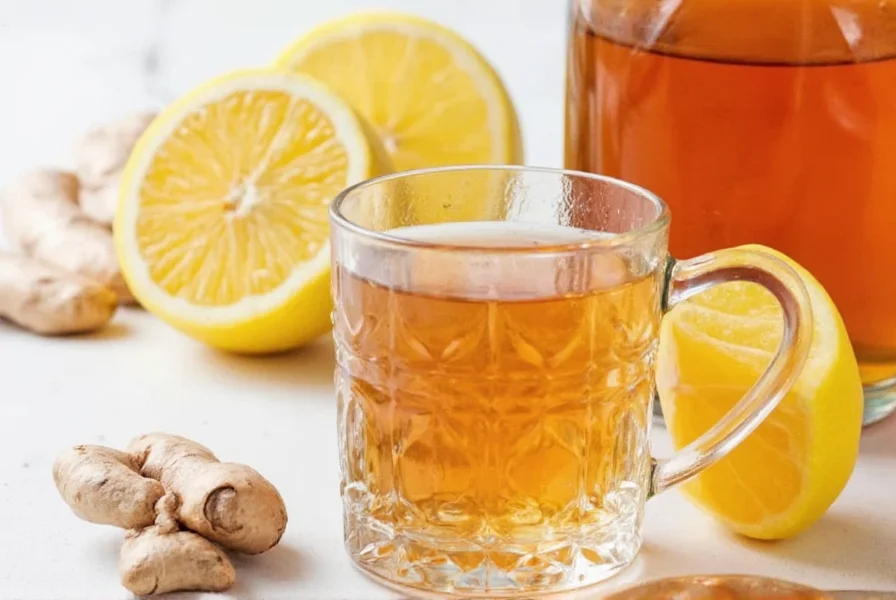When you're dealing with a sore throat, finding immediate relief becomes a top priority. Many people reach for ginger ale as a traditional home remedy, but does this popular beverage actually help soothe throat pain? Let's examine the science behind ginger ale's potential benefits and limitations for sore throat relief.
The Science Behind Ginger and Sore Throats
Ginger contains bioactive compounds like gingerols and shogaols that have demonstrated anti-inflammatory and antioxidant properties in scientific studies. Research published in the Journal of Ethnopharmacology indicates that ginger can help reduce inflammation in mucous membranes, which may provide some relief for irritated throat tissues.
However, most commercial ginger ales contain only trace amounts of actual ginger root extract—often less than 0.5%—with the primary ingredients being carbonated water, high fructose corn syrup, and artificial flavorings. This means the therapeutic benefits of ginger in standard ginger ale are significantly diluted compared to fresh ginger preparations.
Ginger Ale vs. Other Ginger Preparations
| Preparation Type | Ginger Concentration | Sugar Content | Therapeutic Potential |
|---|---|---|---|
| Commercial Ginger Ale | Very Low (0.1-0.5%) | High (20-30g per 12oz) | Low |
| Fresh Ginger Tea | High (5-10%) | Low (adjustable) | High |
| Ginger Syrup | Moderate (2-5%) | Very High | Moderate |
| Raw Ginger | Very High | Low | High (but may irritate) |
This comparison shows why many healthcare professionals recommend fresh ginger tea over commercial ginger ale when seeking sore throat relief. The higher concentration of active compounds in freshly prepared ginger beverages provides more substantial anti-inflammatory effects without the excessive sugar that can potentially feed bacteria or irritate throat tissues.

How Ginger Ale Might Provide Relief
Despite its limitations, ginger ale can still offer some benefits for sore throats:
- Hydration - Staying hydrated is crucial when you have a sore throat, and the liquid content helps keep throat tissues moist
- Warmth - When consumed warm (not hot), it can provide soothing relief to irritated tissues
- Mild ginger effects - Even small amounts of ginger may contribute some anti-inflammatory benefits
- Nausea relief - If your sore throat accompanies stomach upset, ginger's anti-nausea properties can be helpful
For those wondering does ginger ale help with sore throat when other remedies aren't available, it's better than nothing—but not the most effective option.
Limitations of Ginger Ale for Sore Throat Relief
The high sugar content in most commercial ginger ales presents several concerns:
- Sugar can create a breeding ground for bacteria in your throat
- Excessive sweetness may irritate already sensitive throat tissues
- Carbonation can sometimes cause additional irritation
- Artificial ingredients in many brands lack therapeutic value
When evaluating ginger ale for sore throat relief, consider choosing "dry" or "diet" varieties with higher ginger content and lower sugar if you prefer this option. Some craft ginger ales contain significantly more real ginger than mainstream brands.
Better Alternatives for Sore Throat Relief
For more effective natural remedies, consider these alternatives:
- Fresh ginger tea - Steep 1-2 inches of fresh ginger root in hot water for 10-15 minutes
- Honey and lemon water - Combines antimicrobial properties with soothing effects
- Warm salt water gargles - Reduces swelling and kills bacteria
- Herbal teas - Marshmallow root, slippery elm, and licorice root teas have soothing properties

Research in the Journal of Traditional and Complementary Medicine suggests that combinations of ginger with honey may provide superior relief compared to ginger alone, as honey has well-documented antimicrobial and soothing properties.
When to Consult a Healthcare Professional
While home remedies like ginger preparations can provide symptomatic relief, certain symptoms warrant medical attention:
- Sore throat lasting more than 7 days
- Difficulty swallowing or breathing
- Fever above 101°F (38.3°C)
- White patches on throat or tonsils
- Swollen lymph nodes
Persistent sore throats could indicate strep throat, tonsillitis, or other conditions requiring medical treatment. Don't rely solely on natural remedies for sore throat when professional care might be necessary.
Practical Tips for Using Ginger Effectively
If you're considering ginger for sore throat relief, these tips can maximize potential benefits:
- Choose ginger ales with "real ginger" listed in ingredients
- Look for brands with at least 1% ginger content for better effectiveness
- Warm ginger ale slightly (don't boil) to enhance soothing properties
- Consider making homemade ginger ale with fresh ginger for higher potency
- Combine with honey for enhanced soothing and antimicrobial effects
Understanding how does ginger help sore throat involves recognizing that its anti-inflammatory properties work gradually. Consistent use over 24-48 hours typically yields better results than expecting immediate relief from a single serving.










 浙公网安备
33010002000092号
浙公网安备
33010002000092号 浙B2-20120091-4
浙B2-20120091-4